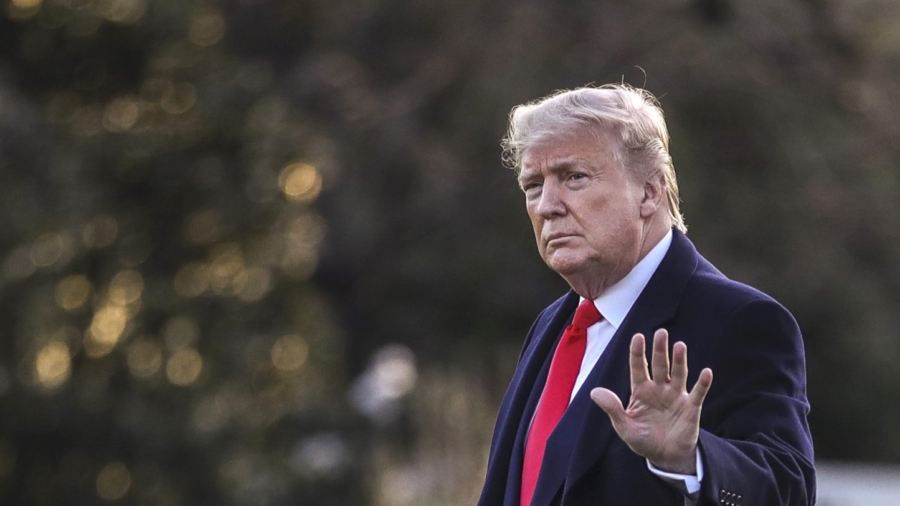President Donald Trump said Iran had targeted four American embassies before the killing of Iranian Gen. Qassem Soleimani a week ago—the clearest details yet on the intelligence U.S. officials had gathered ahead of the airstrike in Baghdad.
“We will tell you, probably it was going to be the embassy in Baghdad,” Trump said in an interview with Fox News’s Laura Ingraham on Friday, adding, “I can reveal that I think it would’ve been four embassies.” On Thursday, he told reporters Iran was “looking to blow up” the U.S. Embassy in Iraq.
Secretary of State Mike Pompeo also told reporters on Friday at the White House that “attacks on U.S. embassies” would have likely been targeted by Iranian assets. “We don’t know exactly which day it would have been executed, but it was very clear: Qassem Soleimani himself was plotting a broad, large-scale attack against American interests, and those attacks were imminent,” Pompeo later told CBS News.
Following Soleimani’s death, Iran fired more than a dozen missiles at U.S. soldiers housed in Iraqi bases on Tuesday night, causing no casualties. Iranian officials said the attack was in retaliation for Soleimani’s killing.

The United States said Soleimani was also responsible for the deaths of numerous American soldiers over the years, and in April 2019, his Quds Force was designated a Foreign Terrorist Organization by the Department of State. Over the past year or so, tensions between the United States and Iran have risen following an attack on a Saudi oil facility that officials blamed on Iran, while Tehran was also accused of capturing oil tankers traveling in and around the Strait of Hormuz.
Additional sanctions were announced against Iran on Friday, said Secretary of the Treasury Steven Mnuchin and Secretary of State Mike Pompeo on Friday.
The sanctions include 17 specific measures against Iran’s largest steel, iron, aluminum, and copper manufacturers as well as eight top Iranian officials involved in the missile attack. Those officials include Ali Shamkhani, secretary of Iran’s Supreme National Security Council; Mohammad Reza Ashtiani, deputy chief of staff of Iranian armed forces; and Gholamreza Soleimani, the head of the Basij militia of the Islamic Revolutionary Guards Corps (IRGC), according to the Department of Treasury.
In an announcement about his executive order, Trump wrote that he is “holding the Iranian regime responsible for attacks against United States personnel and interests by denying it substantial revenue that may be used to fund and support its nuclear program, missile development, terrorism and terrorist proxy networks, and malign regional influence.”
After Trump announced that sanctions would be levied earlier in the week instead of a military action, Iranian officials lodged more threats.
“We could mount the operation in a way that 500 would be killed in the first step and, if they responded, in the second and third steps, their casualties would have reached 4,000 to 5,000,” Brigadier General Hajizadeh said on Thursday, according to state-run media.
From The Epoch Times

